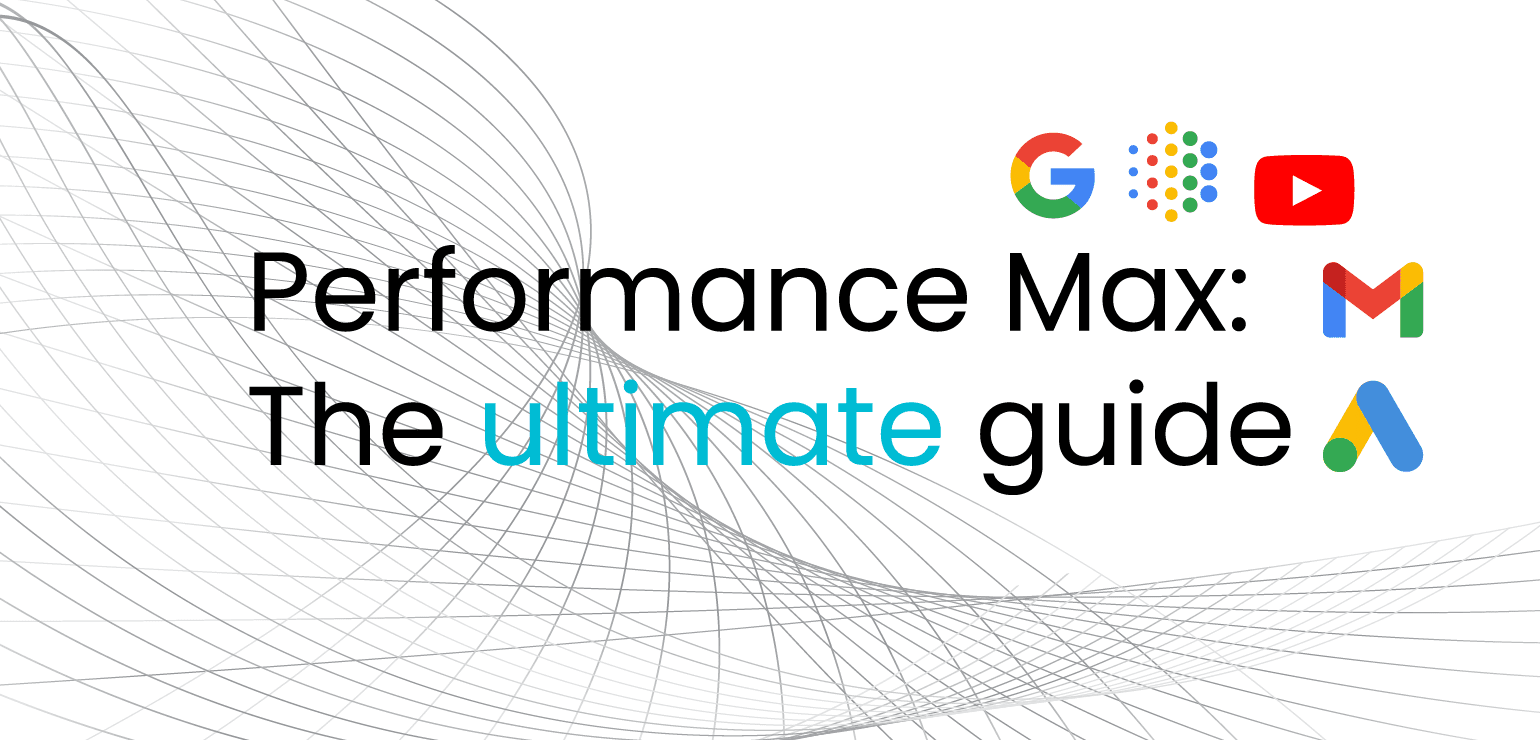Improving eCommerce Email Marketing Conversion Rates
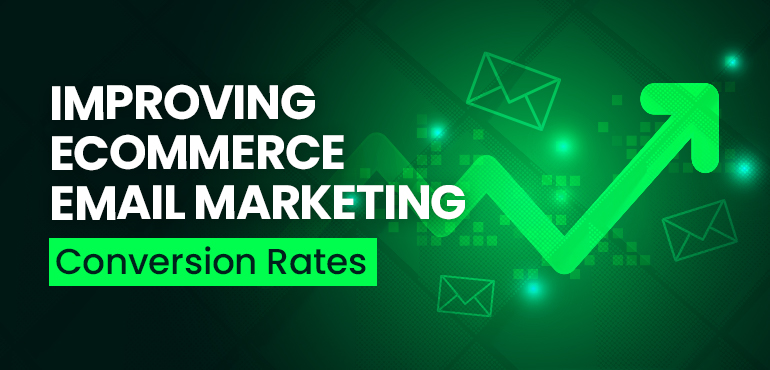
- What is Email Conversion Rate?
- What is a Good Conversion Rate?
- Conversion Rate Metrics
- Hitting Your Target Audience
- Segmentation
- Types of eCommerce Marketing Emails
- Final Thought
Direct email marketing is a key component for eCommerce success. Harnessing the power of targeted emailing is one of the best ways to reach your customers. Most of us check our emails multiple times a day, so a well-pitched email campaign can get your message directly to customers.
Email is still the first choice for customers to receive messages from businesses, with 80% preferring email over other means of communication. That means eight out of ten of your customers will expect to receive emails from your business.
That’s all well and good. But if your eCommerce marketing emails aren’t engaging customers by being relevant and offering them value, then they will have much lower conversion rates and will often end up in the trash.
This article will explore eCommerce email marketing and offer insights on how to measure and improve conversion rates.
What is Email Conversion Rate?
A conversion is when a consumer on your eCommerce website takes a desired action, such as making a purchase, subscribing to a newsletter, downloading content, allowing notifications etc. It’s any action where a consumer actively engages with your online store.
In eCommerce email marketing a conversion is simply when a target customer takes the action intended by the email. In other words, it’s when a customer actively engages by opening the email and clicking a link in the email body, whether that’s to continue an abandoned transaction, take advantage of a special offer, to give feedback or any other action that your targeted email campaign is designed to trigger.
Simply put, email conversion rate is taking the number of people who take a desired action as a percentage of the overall email segment—the number of people who received an email.
For example, if you send out 200 direct marketing emails to customers and 20 people take the desired action, then that’s a conversion rate of 10%.
For eCommerce specifically, the main conversion goal is for a customer to visit your website and ultimately to complete a sale, whether that’s achieved directly with incentives and special offers, or more subtly by nurturing customer relationships for increased customer lifetime value.
What is a Good Conversion Rate?
The conversion rate that you should be achieving varies from sector to sector. Looking at email benchmark data will help you understand where to set your conversion rate goal. That means measuring your direct email campaign performance against your competitors’.
Research carried out by Campaign Monitor shows email benchmark data not only across sectors, but for four differ customer actions: open rate, click-through-rate, click-to-open-rate and unsubscribe. These valuable metrics are a way of gauging email campaign performance. But what exactly do they mean?
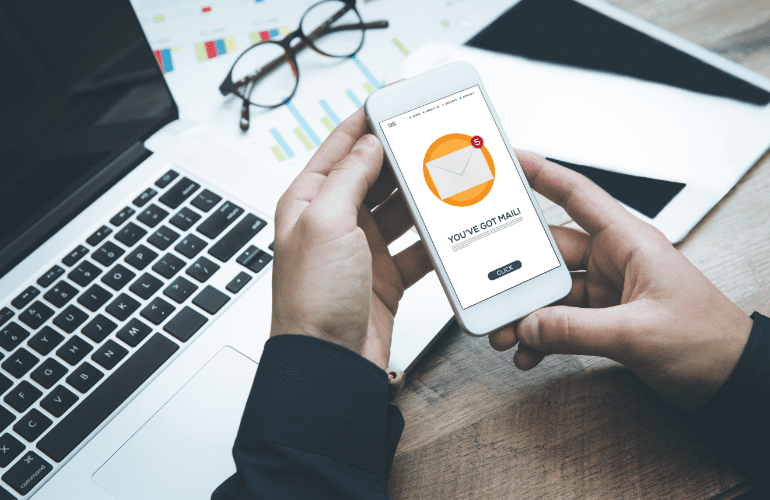
Conversion Rate Metrics
Open rate
This is the number of subscribers who opened your email. Factors influencing the open rate include relevance to the subscriber, topic and subject line. The open rate is calculated by dividing the number of emails opened by the number of emails sent—the higher the better.
Click-through-rate
Click-through-rate (CTR) shows how many subscribers clicked on an element within the email, such as a link, image or video etc. By showing which subscribers clicked what, the CTR offers insight into who is converting from email to your website or other action.
Click-to-open rate
Like CTR, click-to-open-rate (CTOR) shows how many subscribers clicked on links or elements within the email. But crucially, those clicks are compared only with customers who have opened the email, not the whole subscriber list, as is the case with CTR.
Unsubscribe rate
This is simply the number of customers who have chosen to be removed from your mailing list. It’s important to study the unsubscribe rate to see if there is any correlation between your email content and opt out rates. Using the data below you can see benchmarks by sector for the four email campaign metrics:
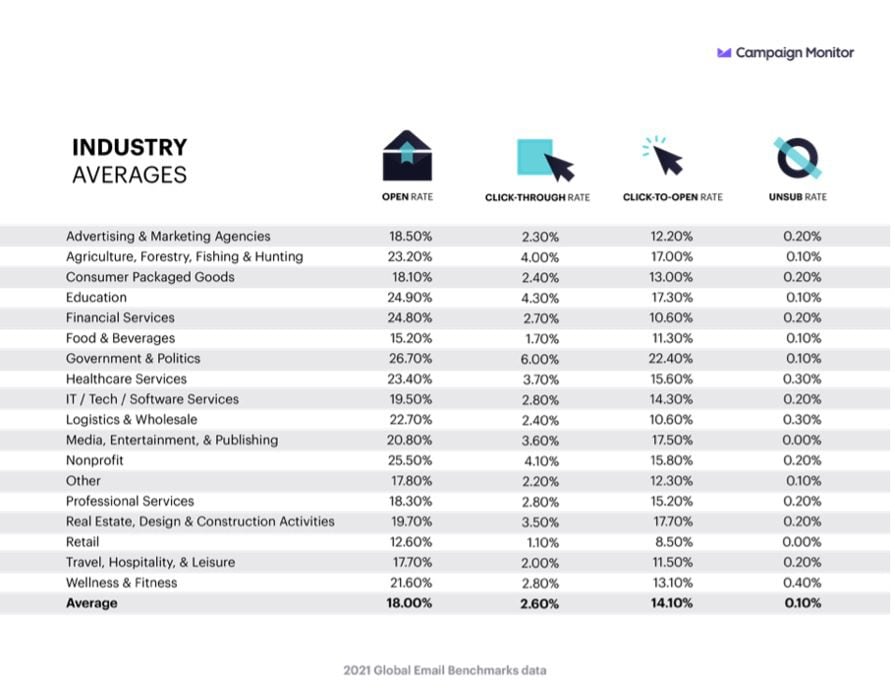
Hitting Your Target Audience
Ensuring that your email campaigns are targeting the right audience is crucial for getting higher conversion rates.
Targeted emails can cover a variety of subjects and purposes, from offering customers special offers, cross-sell and up-sell, to shopping cart recovery and personalised content. This is achieved by organising your customer database into groups, or segments, of customers with common traits, preferences and shopping habits.
By hitting the right audience you will be offering customers more relevant and valuable email content which will in turn be more engaging. Remember, if your emails are of little value to your customers conversion will be very low—an email that’s not relevant to a recipient is junk.
Segmentation
The fact is, many email marketers don’t segment their email databases, simply sending to everyone and hoping for the best, hence the term ‘email blast’.
Not segmenting can lead to irrelevant emails being sent to subscribers, potentially causing lower open rate, CTR and CTOR and unsubscribe rates. Segmentation will help you keep your emails relevant to your customers. Research shows common reactions to irrelevant marketing emails:
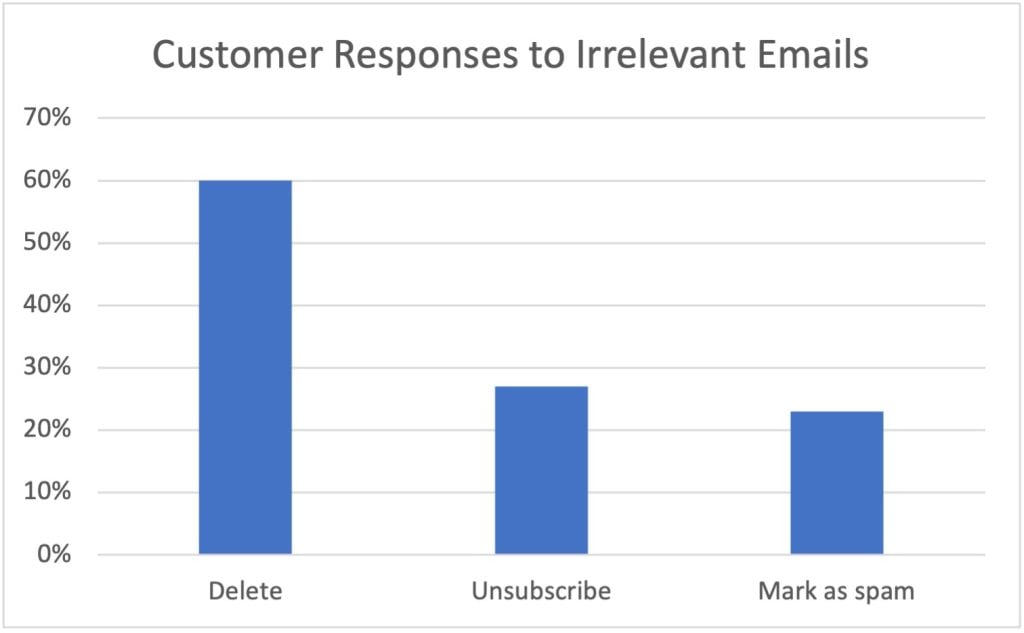
Businesses that use segmented campaigns note as much as a 760% increase in revenue.
There are many ways to segment customer emails for higher conversion rates. Below are some common segments, but you might be able to think of more that are directly relevant to your brand and business:
Geographic location
It’s important to know where your customers are located. For example, if you sent an invitation to attend an event in the UK you probably wouldn’t want to include customers in Australia or China. Likewise, it would be pointless to send sales offers to customers who live in countries that you don’t ship to.
Age
Your customers could be any age, from school student to nonagenarian, so you should adjust the tone and look of your email accordingly. And remove any customers who fall outside the age of your target audience for a particular campaign.
Customer Profile
If you don’t already know, you should find out what your customers’ interests are, their likes and dislikes, and generally what they are about. This kind of information can tell you why particular products or services might provide value for them, or not. For example, customer surveys, purchase history, average transaction value etc.
Browsing behaviour
Find out what pages and products your customers are viewing and how often. See how they are using your website—can they navigate around the site well or do they need a little help? Are they experiencing difficulty using a product? You might segment out newer customers and send them an email that gives tips on using your website, or how to get the best from recently purchased products.
Types of eCommerce Marketing Emails
Cart Recovery
A Baymard Institute study found that, on average, 69.8% of shopping carts are abandoned prior to purchase, with that figure being even higher for mobile shoppers.
One of the most effective methods to increase conversion and sales is shopping cart recovery emails. These are automated emails that are sent to consumers who have browsed your online store, put items in their cart, but have navigated away before checking out.
Recovery emails remind consumers about the items left in their cart, giving them a CTA link directly back to checkout. For higher ticket items offering an incentive to complete the transaction can be effective, such as a discount code, free shipping or other promotional offer. Cart recovery emails have a significant impact on conversion rates. Best practice suggests sending three recovery emails over a given time period:
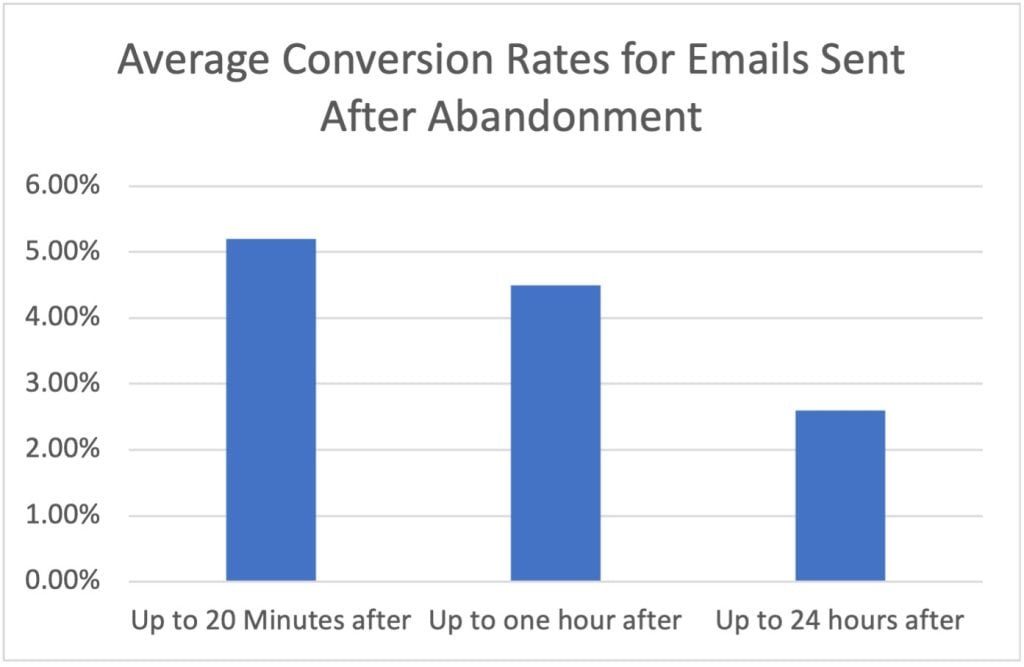
The graph above gives you a reasonable idea of what conversion rates to expect from cart recovery emails. But it’s not a hard and fast rule, and you may find that over time your conversion rate average is a little higher or lower.
Referral
Apart from being a revenue source, your customer base can also provide new leads. Satisfied customers may spread the word on their own, but it always helps to give them an incentive to promote your business.
Re-engagement
The cost of customer acquisition is about five times more than customer retention. Reaching out to inactive customers, especially those who’ve displayed loyalty in the past, results in higher conversion rates.
Related Products
Further target customers who have already shown buying intent with emails that upsell relevant products. These emails should include related products to recent purchases, such as accessories, consumables and associated items.
Final Thought
In this article we have touched on some important elements that impact conversion rates in eCommerce marketing emails, from defining email conversion rate, measuring it, and improving audience engagement to help increase sales, as well as building positive customer relationships for higher customer lifetime value.
The way to ensure that your marketing emails are converting well is with ongoing monitoring and testing for optimised conversion rates. eCommerce businesses, large and small, often partner with a specialist eCommerce marketing agency to hone their strategy and implement highly targeted and optimised campaigns, to identify where conversion rates can be improved.
Are your eCommerce marketing emails hitting the right audience? Are they optimised for conversion? If you would like to find out more about how developing a strong eCommerce email marketing strategy could benefit your business, then get in touch today for a chat with one of our eCommerce marketing experts.


 Back
Back
